Making Research More Connected
Carnegie Mellon University, Robotics Innovation Center Study
←
To Project Types
Pittsburgh, PA | 100,000 SF
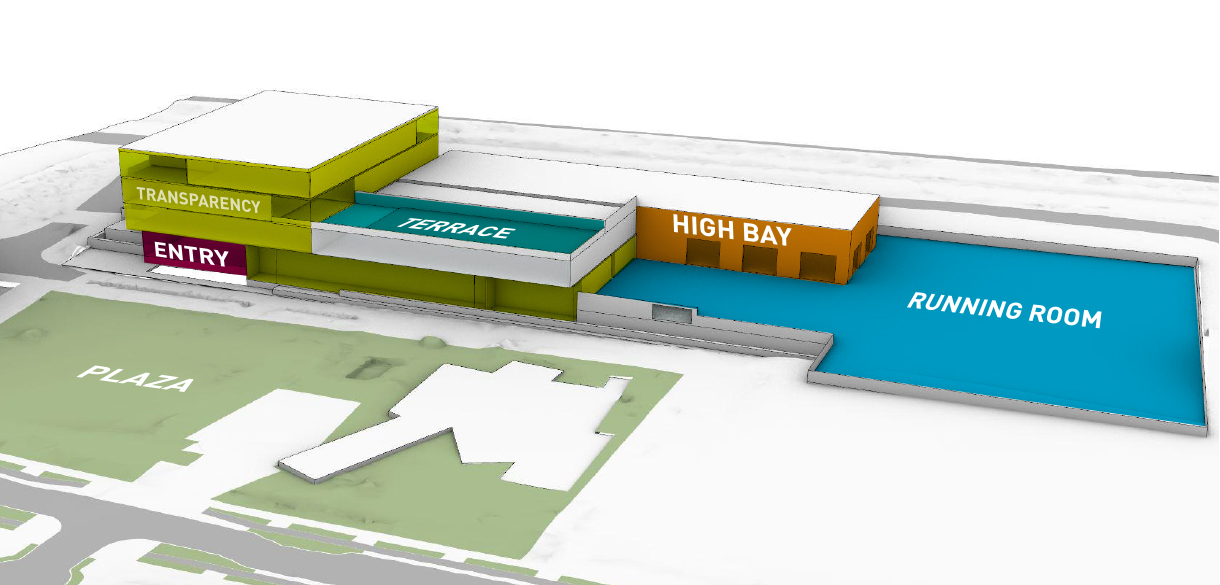 The building was laid out to support an efficient research process while also engaging the public in the ongoing work of the space.
The building was laid out to support an efficient research process while also engaging the public in the ongoing work of the space.
GBBN worked with dozens of representatives from across Carnegie Mellon University (CMU) to envision a future of robotics. The result is a vision for their top-ranked program that is rooted in connection.
CMU’s Robotics Innovation Center (RIC) will not only improve outcomes of translational research by providing space to test robots in real-world conditions (outdoor environments, high-bay facilities, and water tanks), but it will bring together robotics and engineering initiatives that are currently dispersed across six campus buildings.
Beyond co-location, the design team worked closely with researchers to understand the way labs, shops, testing spaces, and workspace interact to support an efficient research process, and what amenities would draw faculty and students from CMU’s main campus.
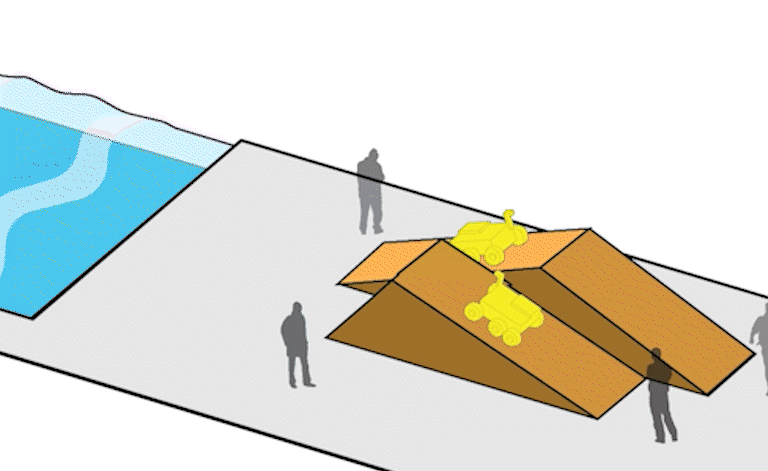 Water tanks, adaptable outdoor running room, and high bay spaces allow robotics testing to occur in variety of real world conditions.
Water tanks, adaptable outdoor running room, and high bay spaces allow robotics testing to occur in variety of real world conditions.
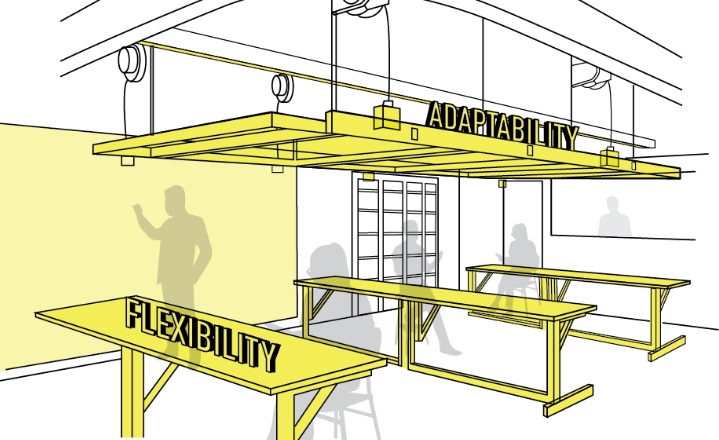 Flexible in the short term and adaptable over the long term, the vision for RIC will enable researchers to keep pace with the quickly evolving field of robotics innovation.
Flexible in the short term and adaptable over the long term, the vision for RIC will enable researchers to keep pace with the quickly evolving field of robotics innovation.
...it will bring together robotics and engineering initiatives that are currently dispersed across six campus buildings.
The study also helped identify supplemental needs—like childcare, public spaces, and cafes—that will encourage researchers to form the kinds of ‘extracurricular’ connections that enrich their research.
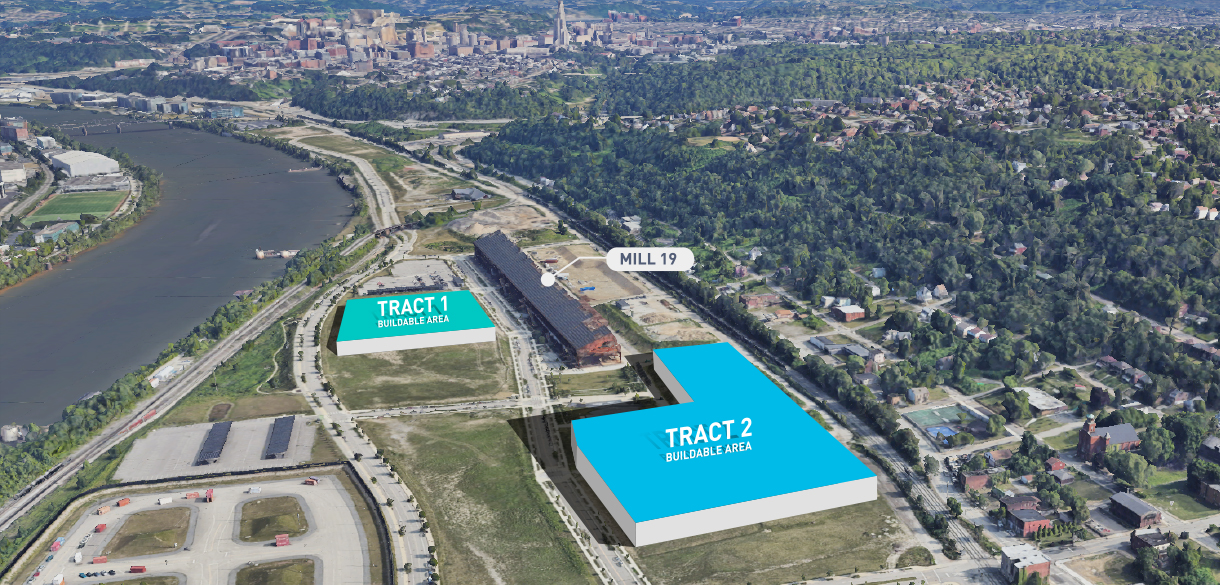 Two sites within Hazelwood Green were investigated for RIC's program. Tract 2 was chosen for its functionality and visibility.
Two sites within Hazelwood Green were investigated for RIC's program. Tract 2 was chosen for its functionality and visibility.
While determining programmatic needs within the building was essential, the team also attended to the connection between the building and the wider public. Located at Hazelwood Green—an old brownfield site that is being redeveloped as a LEED Gold neighborhood—RIC turns a public face to another high-profile robotics research facility at Mill 19, a public plaza, and the neighborhood of Hazelwood. Creating a “front door” on at least three sides, the study also began to develop strategies for fostering curiosity and a sense of belonging.
While opening to the wider public beyond the building, the study also began to envision using layers of transparency that would help share the research process with tours of students, neighbors, future researchers, and industry partners. The study was successful in proving that the site could host the program, leading to the project being funded.
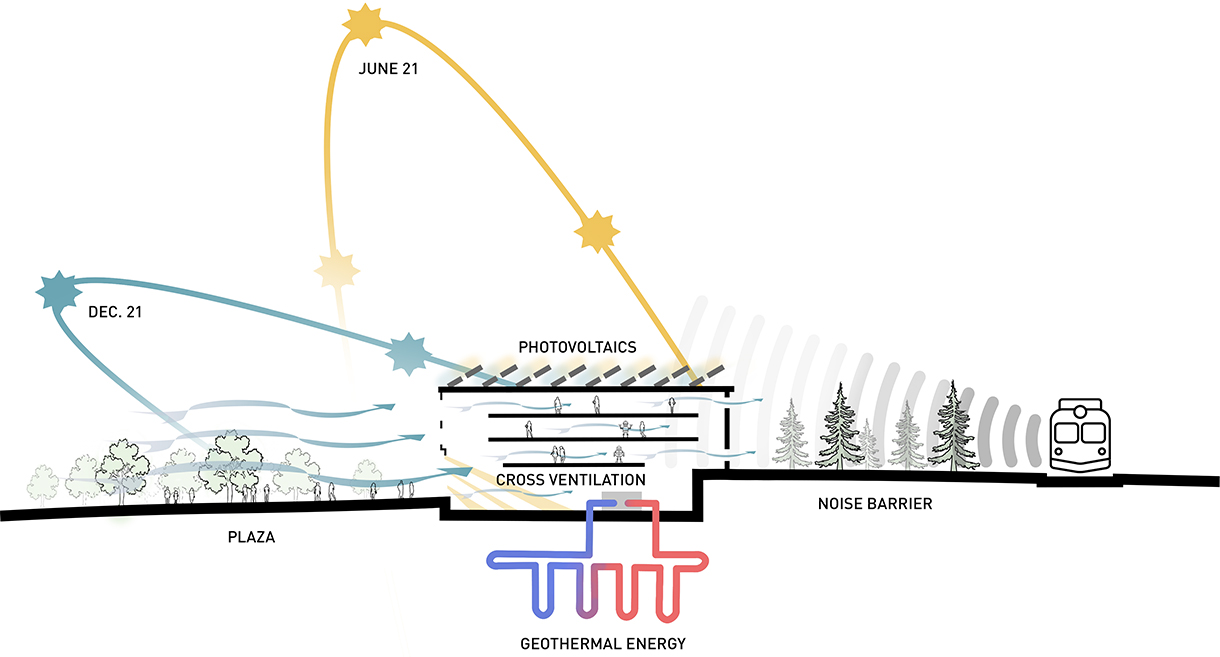 Nothing is future-oriented, if it is not sustainable. The study articulated a holistic vision for environmental and human health.
Nothing is future-oriented, if it is not sustainable. The study articulated a holistic vision for environmental and human health.



